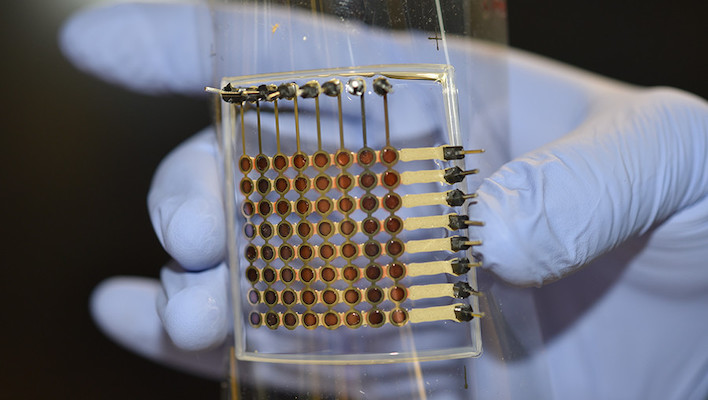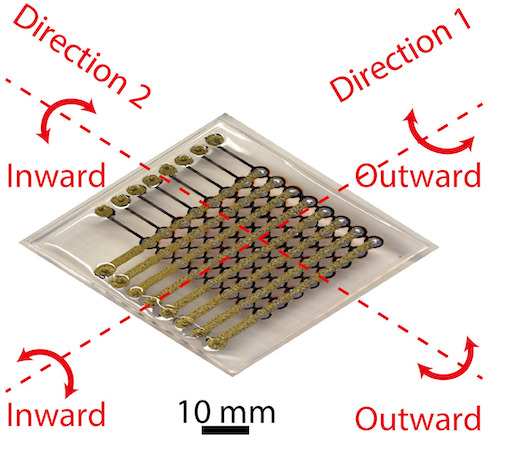3D Printing Flexible OLED Displays Could Make Screen Replacements Cheap And Easy

Nobody can accuse screen replacements of being inexpensive or easy to do. The panels must be produced in expensive micro fabrication facilities, by trained technicians, to exacting standards, sometimes using exotic materials. If a group from the University of Minnesota Twin Cities has its way though, that could change, thanks to 3D printing technology.
Researchers have successfully used a customized 3D printer to create a flexible OLED display. The research, published in Science Advances, could eventually lead to people being able to print a replacement smartphone OLED display right at home.

OLED displays have become extremely popular in television screens, monitors, and handheld electronic devices. They’re lightweight, power-efficient, and offer wide viewing angles and high contrast ratios. On top of that, OLED displays can be made very thin and flexible.
Researchers have tried in the past to 3D print OLED displays, without much success. Maintaining uniformity of the light-emitting layers was a consistent struggle. So, the team decided to combine two different modes of printing. For the electrodes, interconnects, insulation, and encapsulation, the researchers used extrusion printing. The active layers, on the other hand, were spray painted by the same 3D printer at room temperature.
For now, the project is in its infancy and has a long way to go before arriving in your living room. The display prototype the team successfully 3D printed was about 1.5 inches on each side and had 64 pixels. Each pixel worked and displayed light, which was a bit of a surprise to the team. Ruitao Su, the first author of the study and a 2020 University of Minnesota mechanical engineering Ph.D. graduate, was astounded at the success.
“I thought I would get something, but maybe not a fully working display. But then it turns out all the pixels were working, and I can display the text I designed. My first reaction was ‘It is real!’ I was not able to sleep, the whole night”.
The senior author of the study, Michael McAlpine, is a University of Minnesota Kuhrmeyer Family Chair Professor in the Department of Mechanical Engineering. McAlpine said the 3D printer used to make the OLED displays costs roughly as much as a Tesla Model S. Not exactly something we’ll be buying on Amazon any time soon, but the discovery is certainly encouraging for the future.

